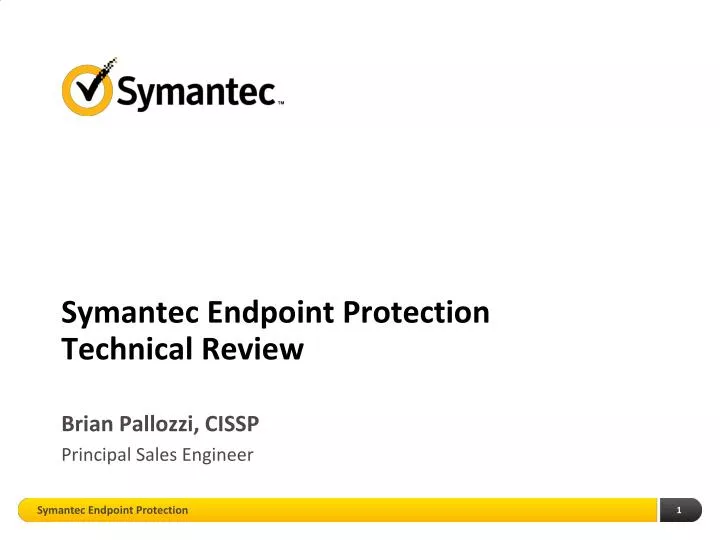

- #SYMANTEC ENDPOINT PROTECTION MANAGER FORCE CLIENT UPDATE INSTALL#
- #SYMANTEC ENDPOINT PROTECTION MANAGER FORCE CLIENT UPDATE UPDATE#
- #SYMANTEC ENDPOINT PROTECTION MANAGER FORCE CLIENT UPDATE MANUAL#
- #SYMANTEC ENDPOINT PROTECTION MANAGER FORCE CLIENT UPDATE PROFESSIONAL#
- #SYMANTEC ENDPOINT PROTECTION MANAGER FORCE CLIENT UPDATE DOWNLOAD#
Symantec Endpoint Protection must be installed on all servers in which will be designated Group Update Providers.
#SYMANTEC ENDPOINT PROTECTION MANAGER FORCE CLIENT UPDATE DOWNLOAD#
From the following window you can assign your new LiveUpdate Policy to individual clients or groups you have created that contain several clients in which the policy will be applied too.Įvery client which is assigned your new LiveUpdate Policy will look to every server you have designated in the policy and then will deduce which server is on its subnet and then they will download updates from that server. See your client with green indicator at SEPM.

Assign your policy then Click Update Policy On Sep Client at system tray. – From the LiveUpdate Policies List you will now highlight your policy and select Assign the Policy from the menu on the left. Open SEPM > Policy > Intrusion Prevention > Settings > Enable Excluded Hosts > Exclueded Host> (Add Your Client IP Address Here Or Add Range IP Address. – Click OK on the Live Update Policy Window to save your new policy. – The final menu option under the LiveUpdate Policy Window, Advanced Settings, provides a few more customization features relating to client product updates and LiveUpdate permissions you may want to allow or disable for client installs of SEP. – From the Schedule Menu button you can set an actual time period for clients to download updates from the Group Update Providers instead of pulling updates at random times. – Return to the Group Update Provider main window upon adding the necessary servers and then from this window you can specify the specifics of client updating from Group Update Providers. – Add as many Group Update Providers as you wish but all Group Update Providers must be on different subnets.
#SYMANTEC ENDPOINT PROTECTION MANAGER FORCE CLIENT UPDATE MANUAL#
Look for Remote Registry choose Manual and click Start button. Search services.msc and Run as Administrator. Go to Control Panel -> Firewall settings -> Turn Off all Private and Public Networking Settings.
#SYMANTEC ENDPOINT PROTECTION MANAGER FORCE CLIENT UPDATE INSTALL#
From the next window you can specify the IP or name of your server, then select OK. Steps to Install Symantec Endpoint Protection Version 14 build 1904 (.0000) in Windows 10 Pro. – If you select Multiple Group Update Providers, just select the Configure Update Provider List button and from the next window, highlight IP Address and Host Names > click Add button > click Create New Rule Set > Leave the default Computer IP Address or Host name option selected and click the Add button at the bottom of the next window.

– From here you can either select a Single Group Update Provider by specifying a server IP Address/server name or you can specify Multiple Group Update Providers. –Once these options are checked click on the Group Update Provider button – Use the default Symantec LiveUpdate server – Use the default management server (recommended) – Select Server Settings Menu Option and then these options should be checked – From here you can both name and describe your new policy however you wish. – Log into the SEPM Console and navigate to > Policies > LiveUpdate > Add a LiveUpdate Settings Policy com site and then apply these updates to all client versions of SEP on the server update provider’s own subnet. You have extended network subnets that you would like to designate additional servers on each subnet to pull virus definition updates from the main SEP Management Console server or Symantec’s. Till here the statement is absolutely correct and SCEP does what it’s supposed to do but there are cases of offenders who refuse to get the regular definition updates from SCCM and make our entire infrastructure itself vulnerable.Situation: You have installed Symantec Endpoint Protection Management Console on a main central server. jdb file in the incoming folder and wait for some. Also you do not need to extract the file just rename it from. This is the folder where the definitions get updated from the SEPM. IssueĮndpoint Protection manages antimalware policies and Windows Firewall security for client computers in our Configuration Manager hierarchy. Hi, It seems the correct path is: C:program filescommon filessymantec sharedvirusdefsincoming. Let me know in the comments section if you have any queries/concerns. In this post, I’m sharing the information for Endpoint protection (defender) clients that are managed through Configuration Manager (a.k.a SCCM). Microsoft changed the name of SCEP to Windows Defender or Endpoint Protection client.
#SYMANTEC ENDPOINT PROTECTION MANAGER FORCE CLIENT UPDATE PROFESSIONAL#
All these are the same from an IT Professional perspective. In this post, I will try to cover the knowledge acquired from the field to fix different issues of Windows Defender or Endpoint Protection client (a.k.a SCEP?).ĭon’t get confused between SCEP and Windows Defender or Endpoint Protection clients. Let’s analyze the options to Fix SCCM SCEP Related Issues.


 0 kommentar(er)
0 kommentar(er)
